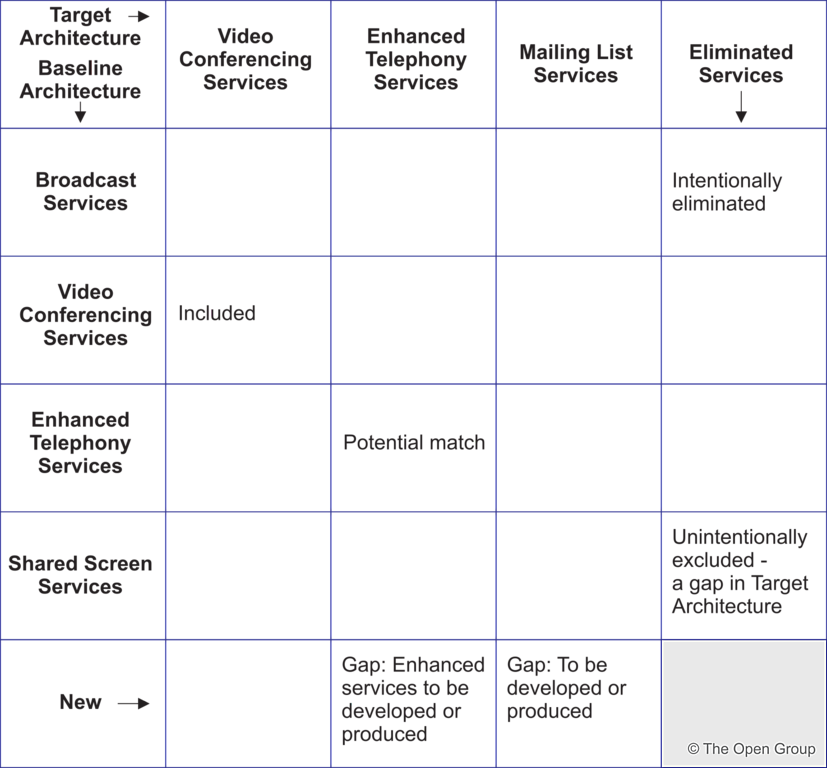5. Gap Analysis
The technique known as gap analysis is widely used in the TOGAF Architecture Development Method (ADM) to validate an architecture that is being developed. The basic premise is to highlight a shortfall between the Baseline Architecture and the Target Architecture; that is, items that have been deliberately omitted, accidentally left out, or not yet defined.
5.1 Introduction
A key step in validating an architecture is to consider what may have been forgotten. The architecture must support all of the essential information processing needs of the organization. The most critical source of gaps that should be considered is stakeholder concerns that have not been addressed in prior architectural work.
Potential sources of gaps include:
- Business domain gaps:
- People gaps (e.g., cross-training requirements)
- Process gaps (e.g., process inefficiencies)
- Tools gaps (e.g., duplicate or missing tool functionality)
- Information gaps
- Measurement gaps
- Financial gaps
- Facilities gaps (buildings, office space, etc.)
- Data domain gaps:
- Data not of sufficient currency
- Data not located where it is needed
- Not the data that is needed
- Data not available when needed
- Data not created
- Data not consumed
- Data relationship gaps
- Applications impacted, eliminated, or created
- Technologies impacted, eliminated, or created
5.2 Suggested Steps
The suggested steps are as follows:
- Draw up a matrix with all the ABBs of the Baseline Architecture on the vertical axis, and all the ABBs of the Target Architecture on the horizontal axis
- Add to the Baseline Architecture axis a final row labeled "New", and to the Target Architecture axis a final column labeled "Eliminated"
- Where an ABB is available in both the Baseline and Target Architectures, record this with "Included" at the intersecting cell
- Where an ABB from the Baseline Architecture is missing in the Target Architecture, each must be reviewed
If it was correctly eliminated, mark it as such in the appropriate "Eliminated" cell. If it was not, an accidental omission in the Target Architecture has been uncovered that must be addressed by reinstating the ABB in the next iteration of the architecture design — mark it as such in the appropriate "Eliminated" cell.
- Where an ABB from the Target Architecture cannot be found in the Baseline Architecture, mark it at the intersection with the "New" row as a gap that needs to filled, either by developing or procuring the building block
When the exercise is complete, anything under "Eliminated" or "New" is a gap, which should either be explained as correctly eliminated, or marked as to be addressed by reinstating or developing/procuring the building block.
5.3 Example
Figure 5-1 shows an example analysis for ABBs that are services from the Network Services category of the TOGAF Technical Reference Model (TRM), and shows a number of services from the Baseline Architecture missing from the Target Architecture.

TOGAF is a registered trademark of The Open Group
 return to top of page
return to top of page